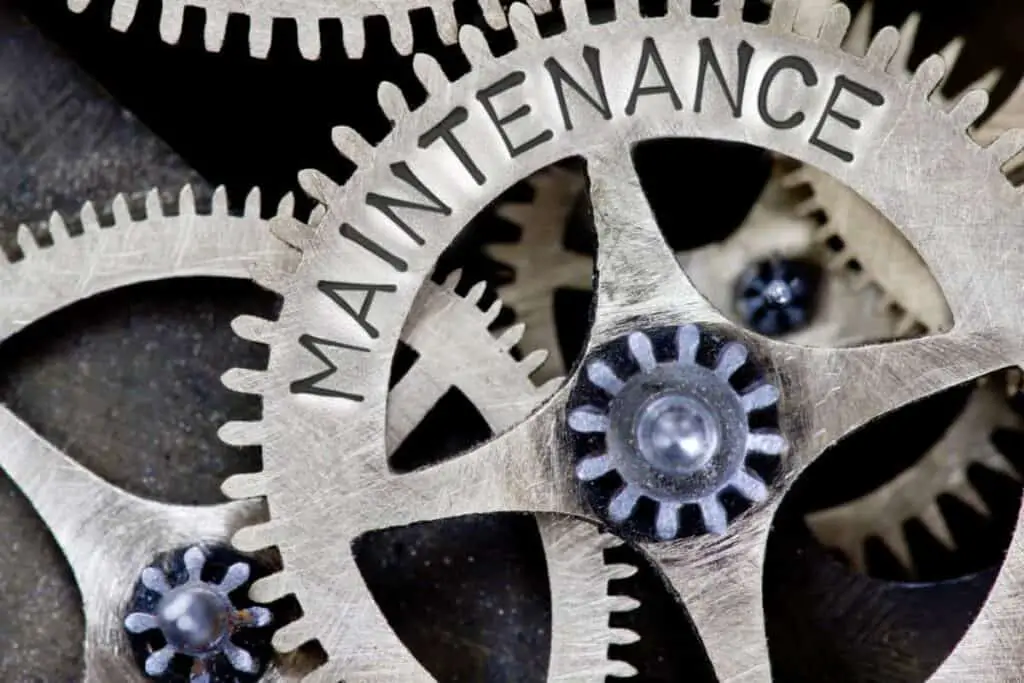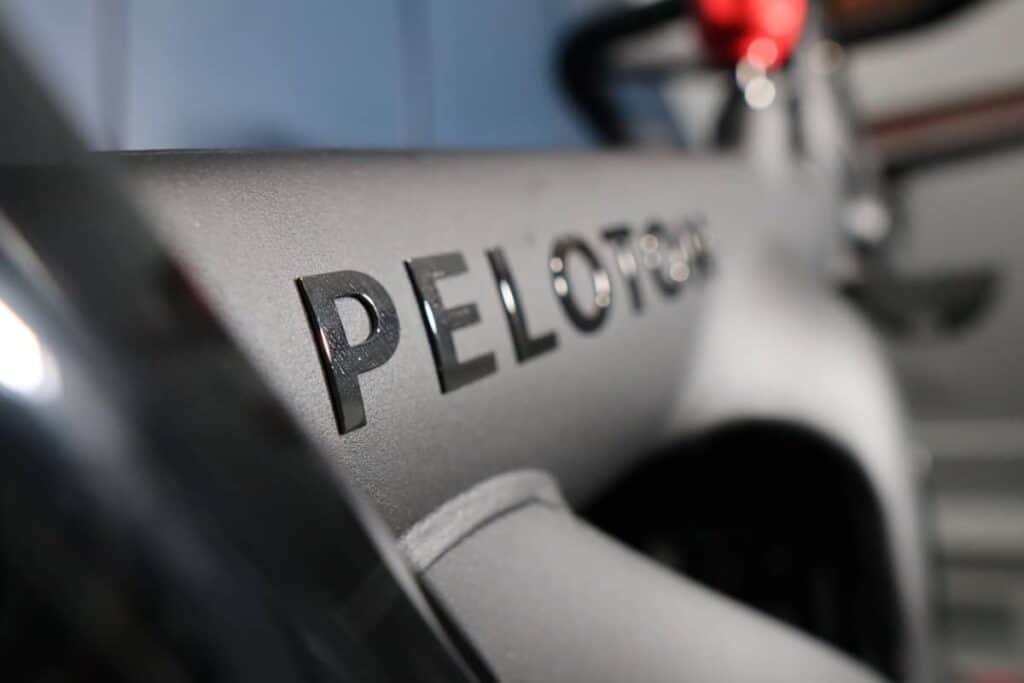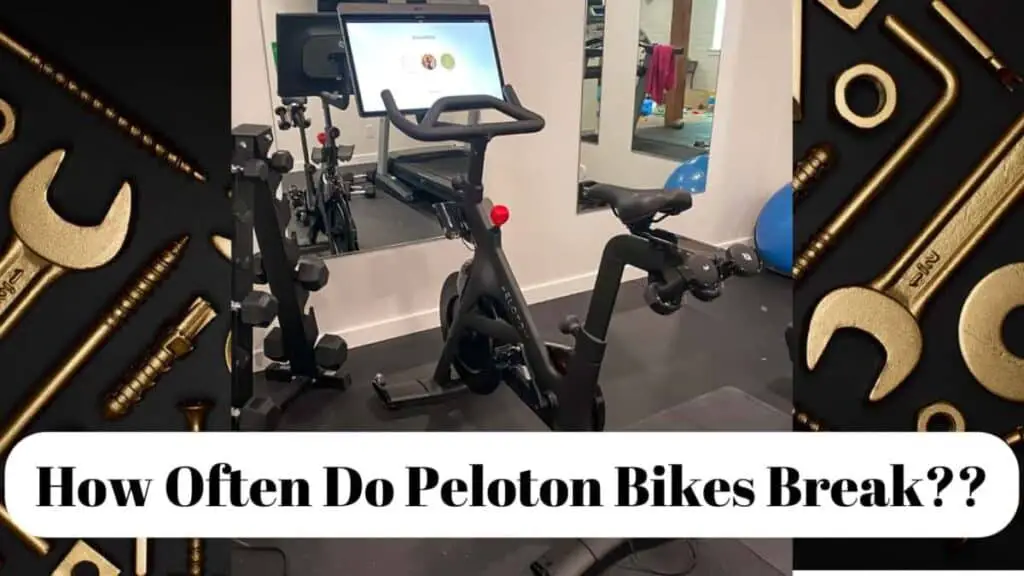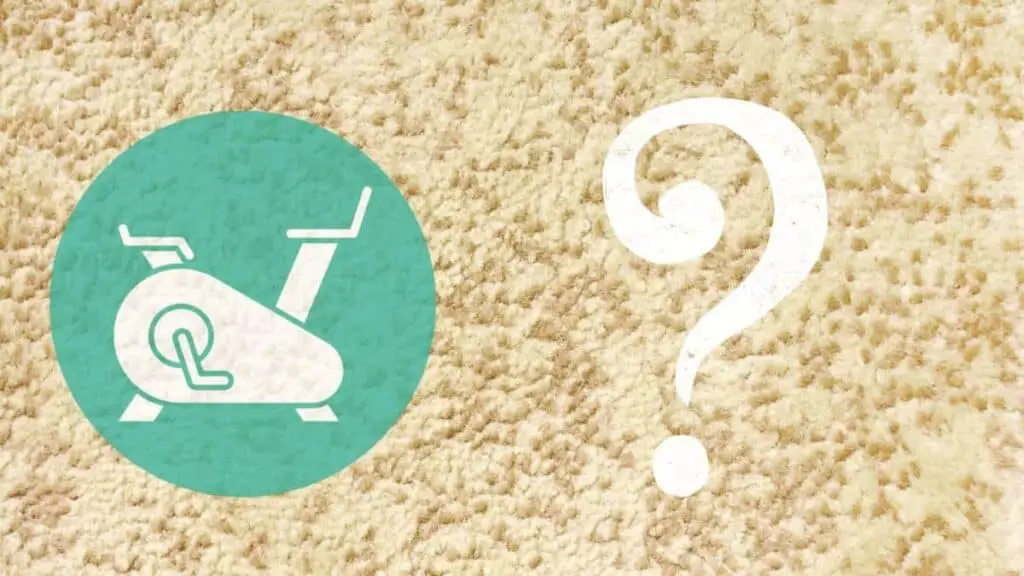Peloton bikes have disrupted the procrastination business. By gamifying cardio, thousands of home users have become active enthusiasts. But Peloton bikes cost, and taking care of your investment can look like a complex undertaking, given all the moving parts.
Peloton maintenance is mainly preventative. Key areas are reducing friction, early detection of defects, and regular cleaning. Peripherals like pedals and shoe straps should be replaced regularly. In-warranty bikes should not be given intrusive DIY maintenance; Peloton should be directly engaged.
This quick post walks you through the steps for lavishing your home bike with the love and care to keep it spinning for years.
Why You Should Maintain Your Peloton Bike

As top-end fitness machines, Peloton bikes do not come cheap. Apart from the initial investment, these machines have a monthly subscription which pushes up the cost of ownership. This itself should be an incentive to preserve your investment.
Maintaining a Peloton bike decreases the risk of instrument failure. Steps in maintenance are largely preventive, specifically designed to minimize the risk of breakage.
The Peloton manual specifies steps to take in regard to maintenance. Failure to comply risks putting the machine out of warranty prematurely. Apart from this, a poorly maintained bike will perform badly, robbing the user of the full Peloton experience.
When You Should Maintain Your Peloton Bike
Different parts of the bike require maintenance at a different frequency. Some guidelines from the Peloton manual are tabulated here:
| Item | Frequency |
| Wipe Down | After each ride |
| Leveling Feet | |
| Cleaning | Every three to five rides |
| Pedal Tightening | |
| Cleat Tightening | |
| Seat Levelling | |
| Emergency Brake Test | Every fifteen to twenty rides |
| Seat Slider Latch Test | |
| Frame Integrity Check | |
| Replace Pedals | Annual |
For detail on these steps, consult the sections below.
What Is The Role Of The Warranty In Maintenance?
The warranty commits Peloton to replace defective parts. It expires at different times, depending on the party concerned. Intrusive maintenance on a part will take it out of warranty, meaning that Peloton will not service or replace it thereafter. Parts that are still covered by the warranty should be referred to Peloton Support when they break or are not functioning properly.
The warranty also limits the use of the machine to non-commercial, indoor use. The original purchaser or giftee (as determined by the app subscription) must be in possession of a covered bike.
Items are covered on the following schedule:
| Item | Warranty Period |
| HD Touchscreen | Twelve Months |
| Bike Components | |
| Bike Pedals | |
| Labor | |
| Frame | Five Years |
Outside of these periods and exclusions listed in the warranty, you should have intrusive maintenance done by certified technicians, using original parts for replacement.
How To Maintain Your Peloton Bike
Why And How To Clean Your Peloton Bike
Apart from aesthetics and overall hygiene, cleaning is the number one maintenance intervention for your Peloton bike. The buildup of grime corrodes the finish of the bike and gets into the moving parts of joints. This increases the risk of friction, which is a leading cause of breakage.
Cleaning your bike breaks down into the following steps:
- Keep a cleaning pack: Preassemble the materials needed for cleaning.
- Manage sweat: Use toweling and protective wear to minimize sweat contact.
- Post-workout wipe-down: Wipe the bike after every workout.
- Post-workout screen clean: Clean the screen after every workout.
- Towel cleaning: Regular cleaning of the microfiber towels.
Keeping A Cleaning Pack
The four key elements of a cleaning pack are:
- Frame Cleaner.
- Cleaning Towels.
- Screen Spray.
- Screen Duster.
We recommended that you keep the cleaning pack handy and close to the machine. Having to seek or assemble after a tiring workout increases the chance that you miss a clean or two.
Manage Your Sweat

The sweat that forms a badge of pride from a good workout has a way of getting onto your bike. If it were pure water, that would be a little more than an annoyance, But sweat is rich in salt.
Because sweat is corrosive, it increases the risk of rust to any metal component that comes into contact with it. Secondly, it creates a glue for dust and grime to adhere to even non-rusting surfaces. Apart from the general tackiness, the buildup of grime increases friction in moving parts and joints.
With this in mind, you want to limit the amount of sweat that gets onto your bike to begin with.
Peloton has included plastic covers of the flywheel and chain. These should be kept in place as they are sweat buffers. Note that they are fastened by metal screws, which need wiping in line with the remarks about rust above.
Keep a microfiber towel or workout towel handy. The handlebars are a convenient place to sling them. Use this towel to clean your hands and brow of sweat periodically, leaving less for transference to the bike through manual contact and dripping.
These are the workout towels we recommend for keeping the sweat from transferring from you to the bike.

Post-workout Wipe
With a dedicated microfiber towel – not your hand/workout towel – wipe the bike comprehensively after every use. The point behind excluding the hand towel is that it may have already accumulated much body sweat, and you don’t want to end up redistributing this over the bike.
After the workout, work systematically over the bike to wipe down sweat. Focus on the areas that you know to be prone to, but don’t exclude anything. Pay special attention to nooks and crevices as these are prime areas for grime buildup.
Microfibre towels are best suited to this task as they have the least likelihood to sop up. They also have a high absorption rate, reducing the chance that your towel ends up as a vector transferring sweat from affected to dry areas.
Here are the microfiber cloths we recommend for wiping down the Peloton bike.

Post-workout screen clean
Exclude the touchscreen from the wipe-down above. But do address the back of the screen, which is prone to gather sweat misting over its top and on its back and edges if it is rotated.
How To Maintain The Frame
In addition to the sweat wipe described above, it is necessary to dust and wipe the frame regularly. The tight nozzle of a vacuum cleaner is the first tool to use, especially in a dusty room.

When cleaning the frame, it is important to heed Peloton’s warning to avoid all products containing ammonia. This degrades and corrodes the material. Many commercial cleaning agents risk discoloring the frame over time. Clorox, Lysol, and Wipes are good wipes to use after the dusting. These wipes are effective at removing bacteria and killing germs.
We have a couple of product suggestions that will provide a shield for the Peloton bike frame as well as a towel that covers the handlebars. Both of these products will do a great job of protecting the bike and bike frame. The same products are avaible for both the Peloton bike and the bike+.
Click on the images below to check them out!


How To Maintain The Machinery
Bolts on the bike might loosen. Inspect them periodically and tighten any loose bolts you may find. Apply the same treatment to the seat, cleats, and pedals. Cleat bolts, however, do not need special tightening. Over Tightening the bolts risks damaging your bike. The idea is to eliminate the looseness that leads to excess friction.

A hex wrench or Allen key might be needed for tightening.
Squeaking is a giveaway clue for lubrication issues. Any type of grease may be used to arrest the problem. Silicone grease is a good choice. If the area of application is too tight to admit the grease loosen it first. After greasing, tighten the joint to avoid friction.
Here is a great suitable grease!
Vigilance is a virtue. Respond to the slightest cue, as waiting for screaming squeaking could be leaving it too late.
How To Maintain The Screen
Maintaining the Peloton screen involves physical maintenance of the exterior as well as the operating software. The high-definition touchscreen is the most sensitive part of the bike and deserves special maintenance.
On a standalone basis, the Peloton screen costs seven hundred and fifty dollars. This provides ample incentive to implement the simple maintenance steps listed below. If you need or want to upgrade the screen, you might be able to do so at a subsidized amount.
Cleaning The Peloton Touchscreen
The screen needs to be cleaned on a frequency-of-use basis. It is exposed to sweat splash as you face it during an intense workout. But the bigger risk is from the oils secreted by your fingers when you touch them. These oils are implicated in the malfunctioning of electronic equipment.
When cleaning the screen, avoid the wipes and spray cleaner, which is used for the rest of the bike. The sensitive touchscreen is an electronic item that must be cleaned with a dedicated screen cleaner and microfilter cloth. These items can be bought at a computer accessories shop, labeled as a tablet or notebook cleaning kit.
Or you can purchase this product that we love to keep the screen squeaky clean without worrying about damaging it.
An alternative is to use eyeglass cleaner. Whichever medium you use, it should not be sprayed directly onto the screen but applied onto the microfilter cloth and then rubbed onto the screen.
Microfiber cloth has been recommended as it does not have the abrasive texture that can scratch the touchscreen. Rougher media like paper towels will not do.
Maintaining The Screen Software And Hardware
The most common complaints are unresponsive screens, app freezing, and hanging streams. Because the device is not mobile, cracked screens are uncommon. Meddling with the touchscreen hardware will void the warranty and is to be avoided. For out-of-warranty devices, find a licensed provider to look into fixing the hardware.
How To Address Freezing Apps
Your Peloton screen uses buffering, a technique whereby a portion of the video is preloaded in order to play smoothly while the next section loads. At the same time, Peloton maintains a cache – an area in which it stores data that it expects the user to access frequently. Rather than repetitiously requesting this data over the Internet, it retrieves the information from a local store – the cache.
Problems arise when the cache and stream buffer compete for scarce memory on the phone. One of the two loses the contest, and the user experiences the dreaded “white screen of death” as one of the channels for smooth delivery of streamed content is blocked.
To clear the cache, carry out the following steps:
- Click the WiFi symbol in the corner of the screen.
- Select “Apps” in the second set of icons.
- Select the Peloton app.
- Select “Force Stop.”
- Accept the warning.
- Clear the cache.
- Reboot the machine.
Power the bike after completing the steps above.
Regularly purging the cache, checking for and installing updates will preserve the efficiency of your app.
How To Address Hanging Streams
Hanging streams are due to connectivity failure, which usually is not due to any shortcoming of the bike but the error in the connectivity infrastructure. If the bike is on a slow network or an ISP that “shapes” data, an inconsistent provision of data will result in interrupted app activity.
Peloton bikes run on a 2GHz quad-core processor, 2GB of RAM, 16GB of internal storage, and 8.02 11ac WiFi supporting ANT+. This technology, which gives Peloton its edge, is throughput hungry, requiring a stable broad Internet connection.
Ensure that you have an appropriate connection, to begin with. If this is hard to achieve, minimize the data load by disabling simultaneous third-party streams from connected devices. Reboot your router if problems persist.
How To Maintain The Pedals
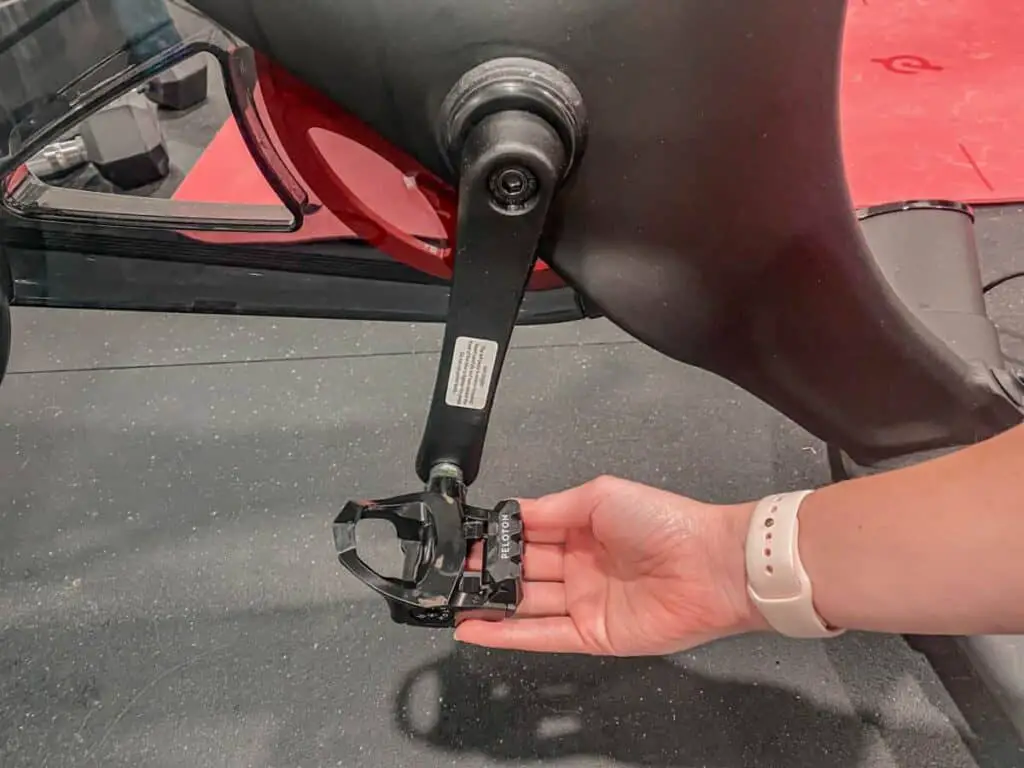
A common cause of wear is to use third-party components interchangeably. Peloton consumer bikes are fitted with Look Delta pedals. If you’re short of cleats, find 3-bolt cleats from Look Delta. You will not void your warranty by changing pedals.
Inspect your pedals periodically for signs of wear. This will involve a visual inspection as well as a feeling for unsmooth movement due to worn threads of buckling. Err on the side of replacing pedals sooner, as malalignment will cause downstream stress.
Spindle thread for Peloton pedals is 9/16”. The constant friction causes wear, leading to a lifespan of about a year. A common complaint is a clicking sound coming from the pedals. This usually is due to a loose cleat belt, and tightening the same erases the problem.
Clipping and unclipping from the bike is designed to be slightly tough – the cleats are meant to avoid accidental slippage. But if these actions are too difficult, it is recommended that you loosen the pedal tension. For this, you will need a 3 millimeter Allen key, as is provided with the bike. Tension is loosened by turning the screw counterclockwise, in ninety-degree turns at a time.
How To Maintain The Flywheel
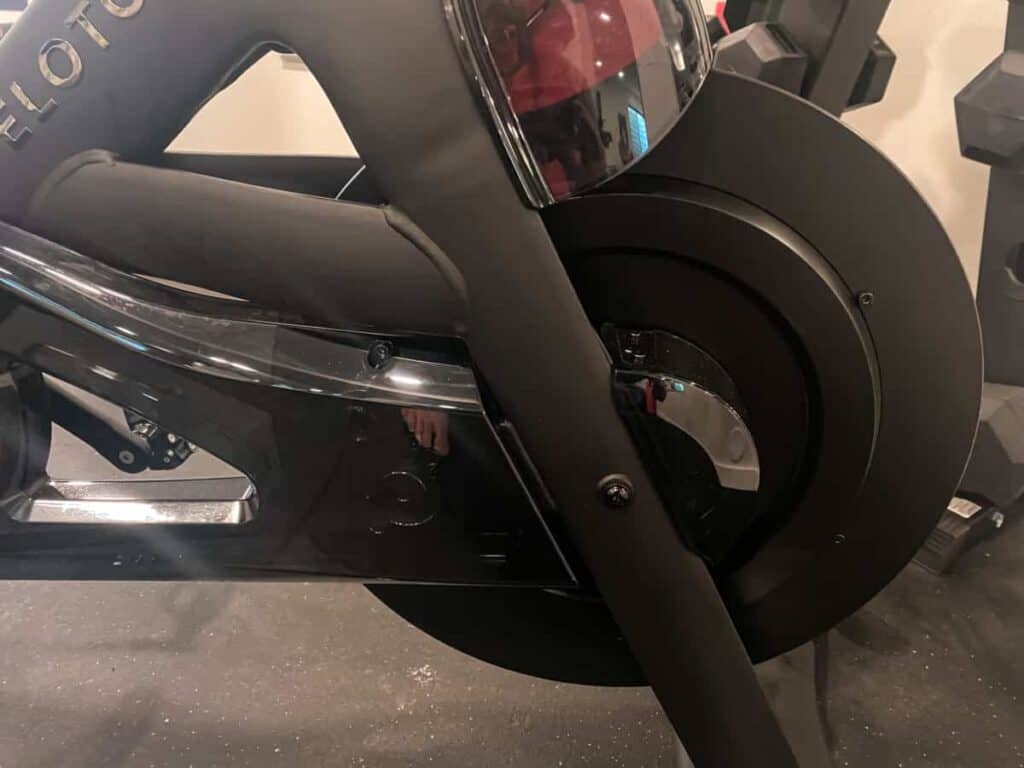
Maintain the sweat guard on the flywheel. It serves as a glove to protect the moving parts from moisture.
Occasionally, take time to oil the chain and flywheel. As these parts move, they tend to decay faster than other components on account of the friction. Peloton has a bike lubricant that assists in this regard. Peloton lubricant is also good for oiling the resistance knob, which has – on older bikes – shown a tendency to lose its linearity.
The resistance knob provides a variance of effort when you tilt it. You will note that cadence and resistance give you the required Peloton output, with resistance adding the bulk of the output. For this reason, it’s critical that this knob is always functioning properly. This knob also doubles as an emergency brake.
While oiling, check the transport wheels, leveling feet, and flywheel for any signs of damage. Preemptive repair is less costly in the long run.
How To Maintain The Environment Around your Peloton
Protecting your Peloton begins with the context in which it is operated.
Setting Up Your Peloton Bike
Managing the environment begins with setting up your bike. If it is not being professionally installed, get a friend or two to help. The bike is heavy, and in the course of moving, it is prone to the risk of collision. This will damage not only its surroundings but, possibly, the bike itself.
Creating A Safe Environment For Your Peloton Bike
The risk of damage to your bike is affected by the management of the context in which it is used. Environmental factors that can affect the safety of your Peloton bike include:
- The ground.
- The atmosphere.
- Space.
- Human traffic.
- Connectivity.
Your bike is a heavy machine that will come in for a pounding. As a result, it applies much stress to the floor. A firm hard surface is best. If you are using a room with a floorboard, the boards should be regularly inspected for signs of stress.
The next caution is to operate the bike from a dedicated mat. These are designed to absorb and defray the vibration generated by the bike, protecting the underlying surface. We recommend placing a towel between the mat and the bike. It is much easier to give the towel a periodic wash than to clean the mat itself of sweat.
Avoid carpets, where possible. They attract dust, which generally is bad for your bike, especially as it combines with sweat and moisture to cake the crevices with grime.
Damp and humid environments increase the risk of rust. While it might be tempting to store your bike in a basement, have due regard for the air quality as it might shorten the overall life of the machine.
Ideally, place your bike in a spacious area, where the risk of collision with other objects is reduced. Of course, the bike itself is stationary, but such collisions can occur due to accidents involving yourself (toggling between bike and floor workouts, perhaps) and other users of the room.
Keep the bike out of areas with high human traffic, such as passages. Keep it out of reach of children, who are more prone to injury and not as inclined to treat the beast with caution as they need to be. Ensure that people who do use the bike at all are familiar with its functions, and err on the side of caution.
Internet connectivity is a key enabler of your Peloton bike’s functionality. Be sure to place the bike in an area that has good coverage and a strong Bluetooth signal. Reposition your router or install a repeater if necessary.
How To Maintain The Seat
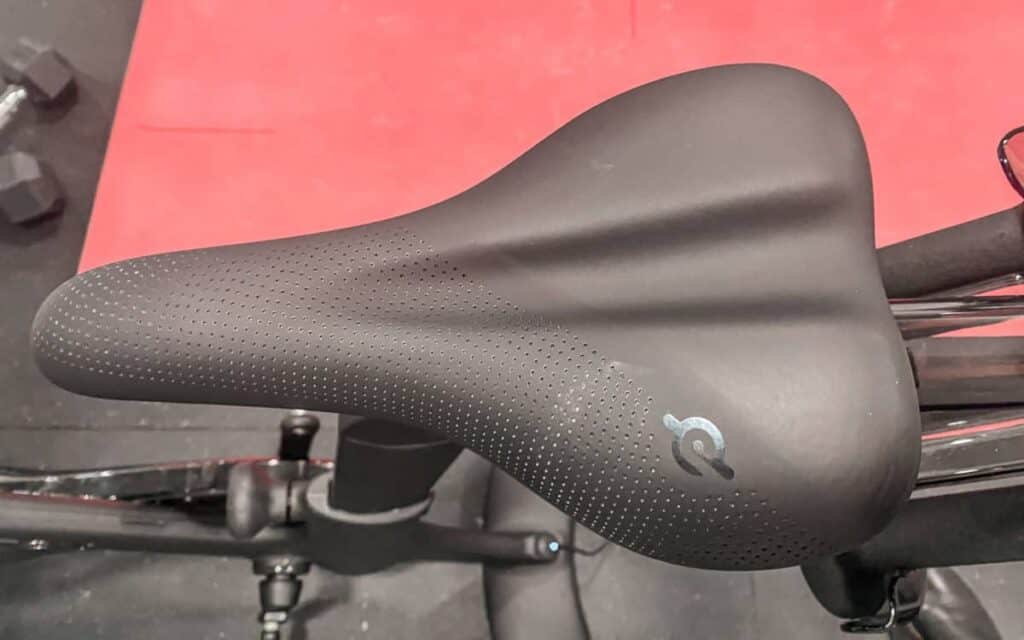
Maintenance of the seat involves four steps:
- Check that the seat is parallel to the ground.
- Check that the seat is tightly secured.
- Include the seat in the regular wipe-downs and cleaning.
- Wash the seat cover on a regular basis.
How To Maintain The Shoes

With a soft wet towel, wipe the outside of the shoes to keep them clean. Consider an odor removing powder if you generate enough sweat during workouts. Vinegar and baking soda are tenable substitutes, although shoe stores also sell dedicated products.
Whichever product you choose, spray or powder the shoes and leave them to dry. Sun-drying should be avoided, as harsh sunlight could cause hardening.
On occasion, you should give the shoes a more thorough clean. This will require:
- Warm water.
- A soft towel.
- An old toothbrush.
- Shoe detergent.
- A soft brush.
Unbuckle the shoes and loosen the Velcro straps. This will provide access to the toe area and help with aeration. Add shoe detergent or diluted dishwashing liquid to the water.
Dip the brushes in the solution and clean the upper and inner with the soft brush. The toothbrush is for the underside of the shoe. Remove the insoles. These need to be scrubbed with a soft brush to rid them of moisture and sweat.
Rinse insoles in tap water to avoid staining.
Servicing Your Peloton Bike
Contact Peloton Support in order to determine whether you qualify for warranty service: support.onepeloton.com.
For out of warranty service, find a certified technician. Peloton will be willing to service and repair the bike but will charge for parts and labor.
Conclusion
Lastly, be sure to turn off the Peloton bike after every session. This will ensure its quality and health. Ensure that it is disconnected from all networks, then depress the onscreen red button for one to two seconds. This will save energy too.
Peloton bikes have proven very effective in converting occasional spinners to regular exercisers. By applying the same consistency to care and maintenance, the longevity of the machine is ensured.

